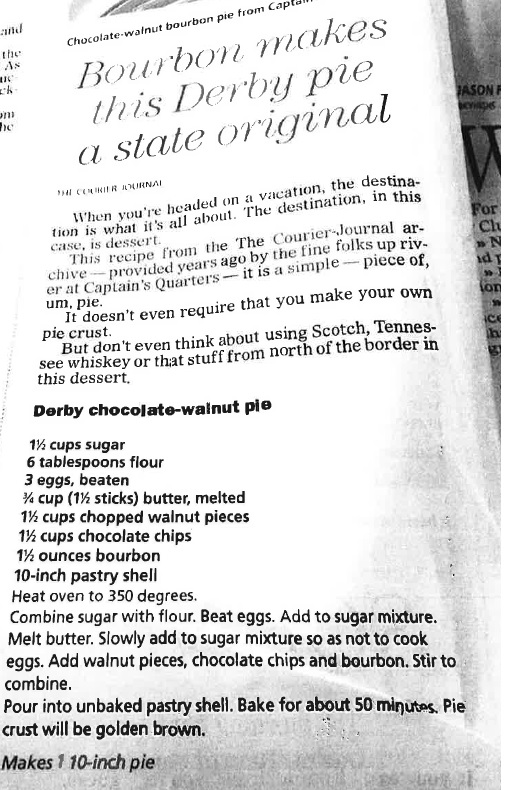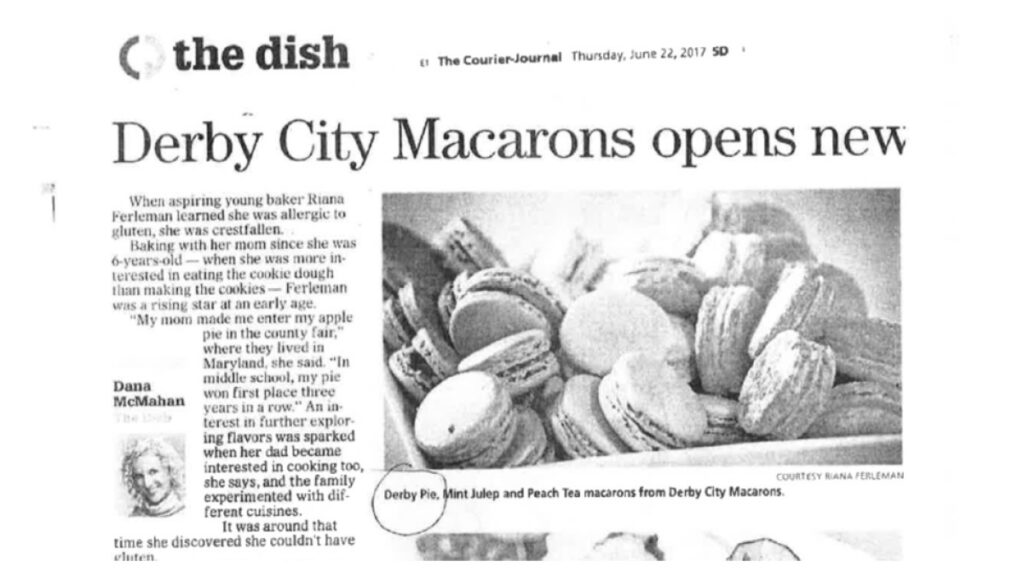In May 2018, the owner of the trademark Derby-Pie sued the Louisville Courier Journal for misusing the Derby-Pie trademark in several articles that appeared in the paper. See, 3:18-CV-277-RGJ. Just last week the district court dismissed plaintiff’s trademark infringement, trademark dilution (because plaintiff withdrew it), and fraud claims.
One article was describing a Derby pie recipe containing bourbon.

The second article was about a Derby pie flavored macarons:

The court rejected the Courier -Journal’s argument that
the First Amendment provides complete immunity from Lanham Act claims. The district court noted that only one district court had extended Rogers v. Grimaldi from
“artistic works” to “newsgathering activities.”
However the district court was more receptive to defendants argument that it had not used Derby pie in a trademark way. The district court said that whether the defendant was using the trademark in a trademark way was a preliminary question to the likelihood of confusion analysis., because if the mark is being used in a non-trademark way, trademark infringement laws, along with the eight-factor analysis, do not even apply.
The district court found that the Complaint fails to plausibly establish that the Courier Journal used Plaintiff’s Mark in any
other way than a non-trademark one. The district court also found that the Complaint had not plausibly established that there is a risk of consumer confusion because both Articles explicitly and repeatedly identify the source of the product as being other than DERBY-PIE®.
As to the first use, the Court noted that “Chocolate-walnut bourbon pie from Captain’s Quarters” identifies the source
of the recipe as Captain’s Quarters, not DERBY-PIE®. Moreover, the headline, “Bourbon makes this Derby pie a state original,” uses “Derby” to modify “pie,” not to identify the source of the product as DERBY-PIE®. This is analogous to using “Derby” to modify “horse,” “hat,” or “party” and does not constitute an impermissible use of the Mark. The Court further noted that because bourbon is not an ingredient in DERBY-PIE®, Defendant’s use of the word “Bourbon” in the headline also indicates that this is not a recipe for DERBY-PIE®.
A reader of Article 1 would not think that Defendant, a newspaper, produced DERBY-PIE®.
Article 2 likewise uses “Derby Pie” in a non-trademark way. Next to a photograph of macarons, Defendant identifies three flavors sold by Derby City Macarons: “Derby Pie, Mint Julep and Peach Tea.” A DERBY-PIE® is a pie; a Derby Pie macaron is a “French almond flour pastry.” Thus, because the Defendant visually and textually links “Derby Pie” to a flavor of macaron sold by Derby City Macarons, a reader would not think that Defendant produced DERBY-PIE®.
The court concluded that because defendant used the mark in a non-trademark way, trademark infringement laws do not apply, plaintiff’s infringement count should be dismissed.
The originator of a product often has difficulty holding on to the trademark, because the brand that the originator bestows on the product, often becomes the name of the product, and thus unprotectable. Mr. Rupp continues to fight the good fight, apparently, but in this case, since the Courier-Journal was not advertising or selling pies, he might have stuck with his dilution claim (unless he was worried that he could muster sufficient proof of Derby-Pie’s fame.